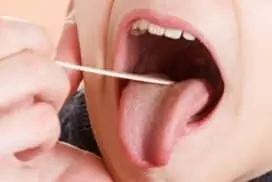
Oral Cancer Exam
Research conducted by the American Cancer Society has shown that more than 30,000 cases of oral cancer are diagnosed each year. If you don’t catch it in time, you can end up going through an extremely difficult and painful battle. The good news is that if oral cancer is caught in its earliest stages, it can be treated and completely healed.
Oral cancers can take many forms, such as teratoma, adenocarcinoma, and melanoma. The most common type of oral cancer is malignant squamous cell carcinoma.
Oral cancer is an under-appreciated threat. Oral cancer begins as an asymptomatic process and can often go undetected. Dentists can help detect this disease, but the early signs are often subtle at first. There are many different types of oral cancer, such as teratoma, adenocarcinoma, and melanoma. The most common type of oral cancer is malignant squamous cell carcinoma.
There are many different places in the oral cavity and maxillofacial region in which oral cancers commonly occur, including:
- Lips
- Mouth
- Tongue
- Salivary Glands
- Oropharyngeal Region (throat)
- Gums
- Face
Reasons for oral cancer examinations
Did you know that 75% of oral cancers are linked with modifiable behaviors such as smoking, tobacco use, and excessive alcohol consumption? Your dentist is the perfect person to turn to for lifestyle changes and smoking cessation!
Early detection is key to successful cancer treatment. If you notice any abnormalities in your mouth, tongue, gums, or surrounding areas, make sure to visit your dentist ASAP. They will be examining your maxillofacial region and mouth carefully for any signs of cancerous changes.
The following signs will be investigated during a routine oral cancer exam:
Red patches: The appearance of red patches and wounds in the mouth can be an early warning sign of cancer. If you notice red patches on the floor of your mouth, the front and sides of your tongue, white or pink patches that don’t heal, or slow healing sores that bleed easily, this may be an indication of pathologic (cancerous) changes.
Leukoplakia: Leukoplakia is a hardened, white lesion that appears anywhere on the inside of your mouth. It can be cancerous and may become cancerous if it goes untreated.
Lumps: Soreness, lumps, or the general thickening of tissue in your throat or mouth can be an indication of a serious health problem.
Oral cancer examination & treatment
The dentist will use a completely painless process to check for oral cancer. This includes looking for abnormalities and feeling the face, glands, and neck for bumps. Lasers that can highlight pathologic changes are also wonderful tools for oral cancer checks. The laser can “look” below the surface for abnormal signs and lesions that cannot be seen on the surface.
The dentist and hygienist will look for changes, but a comprehensive oral cancer screening should be performed at least once a year. As the dentist, I will see if there are any abnormalities or lesions in the mouth and will implement a treatment plan if there are.
Oral cancer is dangerous because it can spread and affect other areas of the body. It is diagnosed when the basement membrane of the epithelium has been broken, which allows cancerous cells to break away. For example, malignant types of oral cancer can spread to the jaw and maxillofacial region. Treatment methods vary depending on the diagnosis and may include excision, radiation therapy, or chemotherapy.

